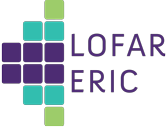Speaker
Description
We present performed in the 20–40 MHz range spectral and imaging LOFAR (LOw-Frequency ARray) observations of solar radio bursts fine structures, such as flag-like, sail-like, and dot-like that appeared on 8 April 2019. These structures were associated with type III solar radio bursts that occurred in the 40–80 MHz band. The mean duration and spectral widths of the fine structures range from 1.0 to 3.4 s and the 0.3 to 0.9 MHz, respectively. Additionally, we investigated the radio images of eight fine structures – two flags, two sails and four dots. This allowed us to determine their emission source sizes, which ranged from 240 to 392 arcmin$^2$, and their frequencies from 25.58 to 39.25 MHz, as well as their location. They occurred on the east side of the Sun and were most likely associated with an emerging active region NOAA AR 12738, where a weak B1.7 flare was observed.
The main results of our work are:
- We found fragmentation of the radio emission associated with type III
bursts in 20–40 MHz band. - Several fine structures were noted that have been classified on the
basis of their appearance on the dynamic spectrum according to the
classification proposed by Magdalenic et al., 2020. - Coronal scattering can affect apparent positions of the sources of the
studied fine structures. Dabrowski et al., 2023 estimated that the
source observed at 35 MHz (roughly corresponding to the average
frequency at which source sizes were studied) would be radially
shifted by about 0.6 Rs from its true location. - We observe identical fine structures in type III bursts as in type II
bursts studied by Magdalenic et al., 2020. Therefore, this phenomenon
appears to be universal, irrespective of the electron acceleration
mechanism responsible for the bursts.
References
Dąbrowski, B., Mikuła, K., Flisek, P., et al., 2023, Interferometric imaging of the type IIIb and U radio bursts observed with LOFAR on 22 August 2017, Astronomy & Astrophysics, 669, A52
Magdalenić, J., Marqué, C., Fallows, R. A., et al., 2020, Fine Structure of a Solar Type II Radio Burst Observed by LOFAR, The Astrophysical Journal Letters, 897, L15

